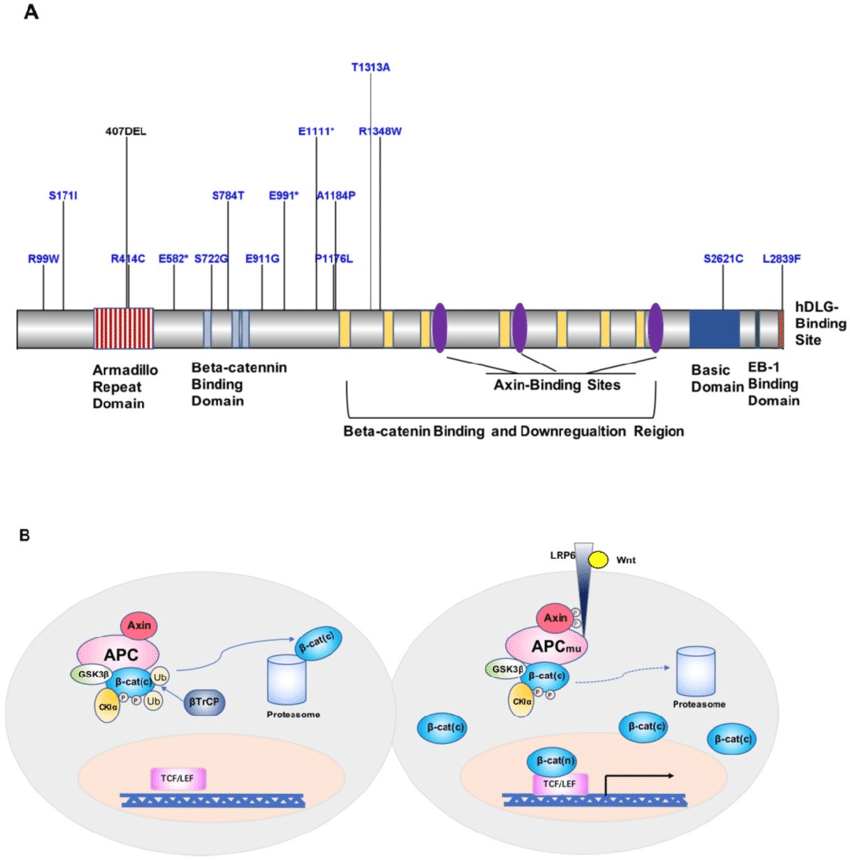APC genetic testing standard
The Adenomatous polyposis coli (APC) gene was first discovered by Herrera on the chromosome of a patient with Gardner syndrome with rectal tumor and intellectual disability, encoding a tumor suppressor protein that plays a role in wnt signaling and intercellular adhesion It plays an indispensable role and acts as an antagonist of the wnt signaling pathway. APC is located at 5q21-q22, contains 8535 nucleic acids, exon 21, encodes a 310 kDa protein, contains 2843 amino acids, and 75% of the coding sequence is located in exon 15, which is the most common site of germline and somatic mutations.
Germline mutations in the APC gene are responsible for the autosomal dominant disorder familial adenomatous polyposis (FAP), and somatic mutations in APC occur in approximately 80% of sporadic colorectal tumors. APC mutations almost always result in a dysfunctional truncated protein product. More than 700 APC gene mutations have been identified in families with typical and attenuated forms of familial adenomatous polyposis (FAP). Most of these mutations result in the production of abnormally short, nonfunctional APC proteins. This short protein cannot inhibit the overgrowth of cells that lead to the formation of abnormal growths (polyps) in the colon, which can lead to cancer. The most common mutation in FAP is a deletion of five nucleotides in the APC gene. This mutation changes the sequence of the protein (amino acid) building blocks of the resulting APC protein. While most people with FAP will develop colorectal cancer, the number of polyps and the time frame in which they become cancerous depends on where the APC gene mutation is located. The location of the mutation also determines whether individuals with FAP are susceptible to desmoid tumors.

A. Map of APC protein mutation sites.
B. Model of the contribution of the APC gene to FAP development and progression.
For the detection of mutation types, we can provide diagnostic standards to ensure the detection limit, sensitivity and stability of the diagnostic method.
Partial product data
APC p.R1114* Reference Standard RQP10228

APC p.R232* Reference Standard RQP10101

APC p.T1430fs Reference Standard CBP10446


